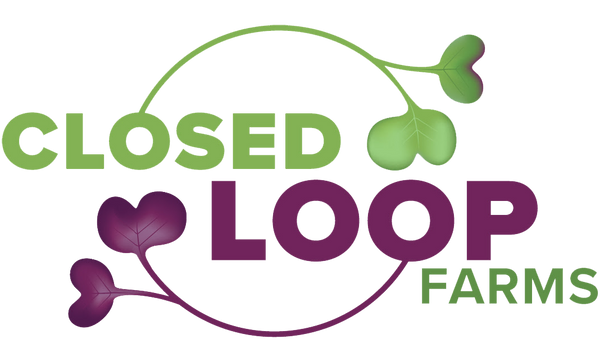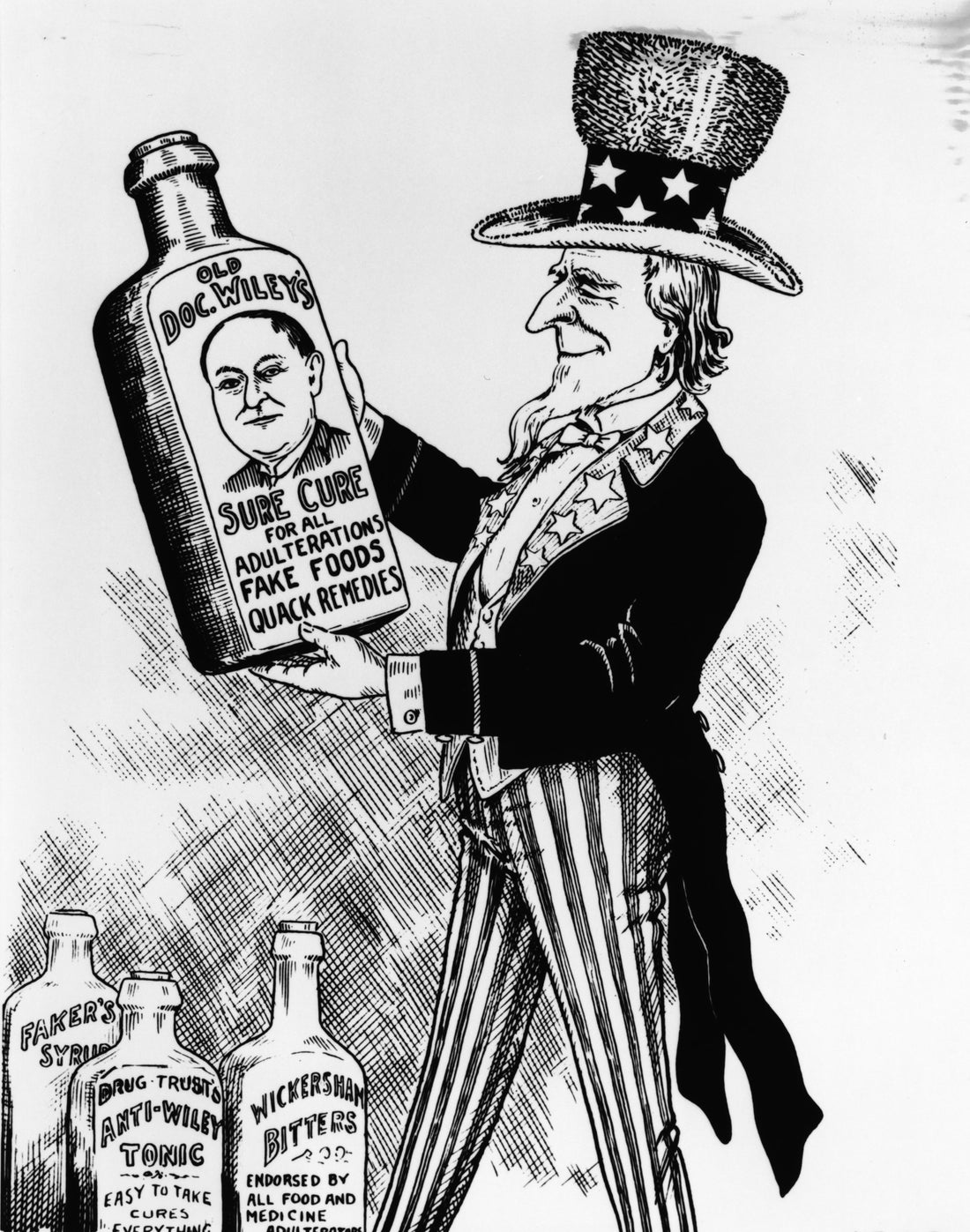An Abbreviated History of the FDA
At the very beginning of the 20th century, the United States Food and Drug Administration (FDA) was officially born under the jurisdiction of the USDA’s Bureau of Chemistry. This achievement was largely made possible by the efforts of three leaders from very different sectors of American society: Upton Sinclair, Henry Heinz, and Theodore Roosevelt. With the 1906 publication of The Jungle, Upton Sinclair achieved the necessary level of public outrage to spur movement. Henry Heinz seized the opportunity to direct that movement, making his industrial food production processes synonymous with safety and purity. And Theodore Roosevelt, notorious leader of the Rough Riders volunteer cavalry, who wrestled the Cuban sugar plantations from the Spanish empire.
This is all related - stay with us.
While Upton Sinclair’s novel about the deplorable conditions of factories staffed mostly by working class immigrants in the US failed to arouse much empathy for said immigrants from the majority of readers, it did manage to upset stomachs. In this famous excerpt, Sinclair describes the conditions he witnessed first hand in Chicago’s Packingtown sausage factories at the beginning of the 20th century:
It was too dark in these storage places to see well, but a man could run his hand over these piles of meat and sweep off handfuls of the dried dung of rats. These rats were nuisances, and the packers would put poisoned bread out for them; they would die, and then rats, bread, and meat would go into the hoppers together.
Upton’s vibrant imagery and fiery language throughout the heartbreaking narrative frequently document the intentional contamination of common foods: milk turned blue with formaldehyde, pickles dyed fantastic colors with toxic salts of copper, diseased livestock and workers alike rendered to their basic proteins and stuffed into casings, cans, and mouths from sea to shining sea. It’s no surprise that stories like these had connected with the same public who worked and paid money to consume these poisons. It was clear by 1906 that something had to change, and it would take the full force of the federal government to make it happen.
So, like any good industrialist, Henry Heinz recognized this swelling potential and immediately began working to permanently associate the Heinz 57 brand with the concept of “Pure Food.” Heinz ads highlighted the reliable purity of their products, backed up by public factory tours and clear glass bottles. Heinz’s Pure Foods, they said, contained no preservatives except sugar. The preserving quality of sugar, which was not a common ingredient in the mushroom or walnut based ketchups of yore, allowed Heinz to back up the incredible claims on his labels. And the size of Heinz’s bank accounts allowed him to personally lobby for the passing of the Pure Food and Drug Act of 1906. Heinz represented not just a personal fortune behind the Pure Foods Act, but an entire industry, and an industry even bigger than prepared foods: the sugar industry.
The last of our unlikely coalition is 26th President of the United States, Theodore “Teddy” Roosevelt. At the turn of the 20th century, the sugar industry was tantamount to imperialism, just as spices in the 18th century and textiles in the 19th. Roosevelt spent his entire political and military career securing US control of Cuba, Hawaii, Puerto Rico, Barbados, and other sugar-growing nations for the explicit purpose of plantation cropping. Using the full might of the federal government to secure a golden future for sugar appealed to Roosevelt even more than his public hatred of Upton Sinclair and the other “Muckrakers,” as he called the investigative journalists of his time.
And so in 1906, the Food, Drug, and Insecticide Administration (FDA) was formally bestowed the sacred duty of regulating industrial labeling standards – not regulating production, or ingredients, or distribution or storage. Just labeling.
This meant that medicines like Mrs. Winslow’s Soothing Syrup for Teething Children – a very popular concoction of high proof alcohol, morphine, and ammonia for babies – were now required to plainly list the poisonous ingredients their products still legally contained. Heinz’s interests led him to regulate labeling and not production because his goal was not safe food, but rather a monopoly on food safety. By forcing his competitors to label their poisonous ingredients, Heinz was able to offer American consumers a simple choice: pay a premium for “Heinz Pure Foods,” or eat poison. This was far from an original concept. In fact. it’s the solid bedrock of American consumerism – pay more to suffer less.
Ok, but the FDA does regulate food, right?
Openly poisoned foods and medicines would remain in American markets until the 1938 Food, Drug, and Cosmetics Act heaved the FDA into its second era. The landmark legislation added cosmetics and therapeutic devices to the FDA’s purview while simultaneously giving it power to inspect facilities, charge violators with punitive damages, and require that new products be proven safe before hitting the market.
These gains did not only benefit consumers but also manufacturers. The 1938 Act set up an Agricultural Marketing Services (AMS) division under the USDA to carry on the important work of manufacturing consumer trust via labeling. The first legislation following, in 1939, perfectly exemplifies this: the FDA set forth safety standards for production of canned tomato products, while AMS licensed their logo to brands – like Heinz – that upheld these standards.
Finally, with the AMS playing concierge to the industrialists, there was now little for the FDA to do but finally regulate the production of food, drugs, and cosmetics. The 1940s and 50s brought a flurry of legislation protecting consumers from unsafe insulin and penicillin, food adulterants like heavy metals and pesticide residue, as well as blatantly fake products like oleomargarine and snake oils. Along with these regulatory actions, landmark court cases put the executive class on alert: the 1943 U.S. v. Dotterweich ruling stated that individual officials could be held personally liable for violations by their companies.
This second era of the FDA would be studded with important legislation protecting consumers and rigorous judicial action against industrial violators – truly the most unsettling monster Henry Heinz could have imagined. However, immediately following the assassination of John F Kennedy and his “Consumer Bill of Rights,” the Drug Abuse Control Amendments of 1965 and 1970 Drug Abuse and Control Act would define the FDA’s third era: policing.
As a criminal industrial agency, the FDA’s chief focus would revolve around defining the illegality of various “controlled substances,” beginning a very fruitful relationship with the Department of Justice and a new industry of privately owned prisons. The explosion of incarcerated citizens from the so-called War on Drugs was so extreme that by 1983 private prison companies were so large and wealthy they conglomerated into the publicly traded Corrections Corporation of America (known today as CoreCivic, the $2 billion company that profitably operates more than 65 US prisons across 19 states in addition to concentration camps at the U.S.-Mexico border).
Oh. So where should the FDA go from here?
The whole history of American commerce has made it abundantly clear that industrialists will sell anything, including poison, for a profit. The history of American government has made it equally clear that industrialists will buy anything, including legislation, for a profit. To this day, American consumers are constantly faced with Heinz’s quandary: pay a premium for USDA Organic, non-GMO Project Verified, Dolphin-Safe, Orangutan Friendly, Vegetarian-Grass-Fed, rBST-Antibiotic-Cage-Cruelty-Free, Fair-Trade Certified “Pure Foods”™, or eat poison.
After 120 years, the most tangible difference in food regulation is the highest incarceration rate per capita ever recorded in history and a list of “Generally Accepted as Safe” food additives Known to the State of California to Cause Cancer. The merging of industrial and regulatory interests has predictably failed to produce safer food systems.
Modern politicians point this out as a reason to de-regulate industry as if de-regulation was in any way different from self-regulation. This is because – just as before – the regulators’ goal is not safe food, but rather a monopoly on food safety.
While the FDA is a powerful tool, it has seldom been wielded by the consumers it supposedly protects, and politicians on the industrial payroll will hardly be the ones to change that. A future of safe food is possible, but only by the sovereign dignity of consumers empowered to determine and shape their own markets. If the FDA is to have a future, it must be one of consumer protection, not unfettered commerce plunging us back to the days of rotted meat, mushroom ketchup, and Mrs. Winslow’s baby killing syrup.
Isn’t this a farm blog? How will this sell lettuce?
Despite the flimsy and biased nature of the FDA, a world with even less consumer protection is rapidly taking shape around us. Numerous American foods have been banned from export to Canada and the European Union for decades, citing toxic and carcinogenic ingredients like the ones discussed above. This is not a new phenomenon and it is accelerating. In 2023, the FDA cut national listeria and salmonella testing by 50%. So it should surprise no one that in 2024 listeria contaminated Boar’s Head deli products killed at least 10 people, while cucumbers and eggs both sparked multiple salmonella outbreaks across the U.S.
In January, the Vistra Corp battery fire in Moss Landing, California blazed for nearly a month releasing lithium, cobalt, nickel, and other toxic materials into the atmosphere and echoing the harrowing tales from other mass contamination sites like the Marathon refinery fire in St John the Baptist Parish, Louisiana; the Norfolk Southern train derailment of East Palestine, Ohio; and the ongoing water crisis in Flint, Michigan. The Moss Landing fire occurred 20 miles from Salinas County, California, where about 50% of America’s leafy vegetables – organic or otherwise – are grown.
All of this before even considering the haute toxins of our time: BPA, PFAS, microplastics, phthalates, cocaine and benzodiazepines, whatever Red 40 is made of… it’s a treacherous landscape for the modern consumer, even when paying extra for “Pure Foods”. As Upton Sinclair once again perfectly articulated in The Jungle:
If they paid higher prices, they might get frills and fanciness, or be cheated; but genuine quality they could not obtain for love nor money.
As an urban farm nestled in the sprawling industrial wreckage of Chicago’s Historic Packingtown, Closed Loop is particularly familiar with navigating potential contamination sources. We have a raised farm on top of a parking lot so that our lettuce and herbs are grown safely above any potential ground contamination. The Plant uses a rain collection system, allowing us to water our outdoor crops with pure rainwater. Our main fertilizer is microgreen compost, our main herbicide is a tarp, our main pesticide is a healthy local ecosystem including birds, snakes, and insects. Regulation from the FDA doesn’t impede any of this.
While the modern era of laissez-faire regulation converges with the cutting edge of space age pollution, more and more places on the Earth will inevitably become contaminated. A de-regulated industry would put us exactly where we were before 1906: with unlabeled poisons peddled by charlatans. We need an FDA, but more specifically we need an FDA that will enforce public interests and protect consumers – an FDA free of private interests and their corrupt politicians. We need an FDA that Nurtures Better Food Systems.

